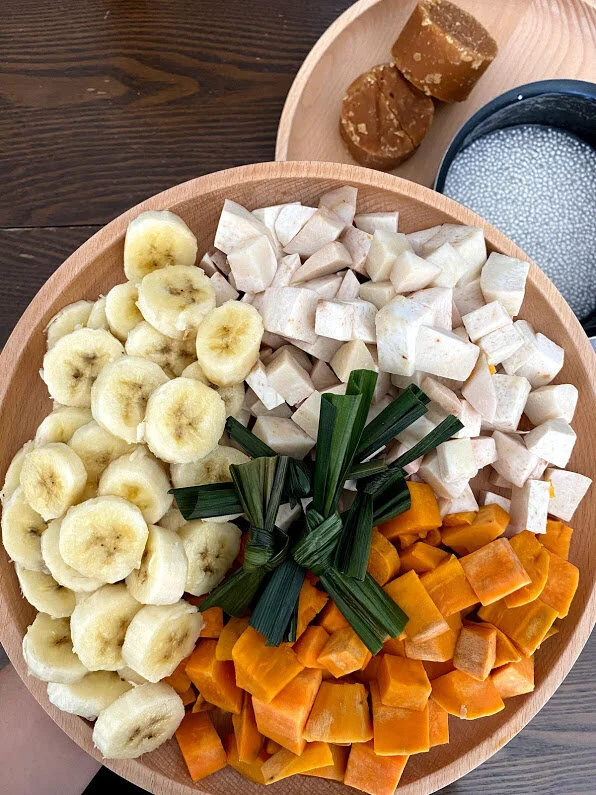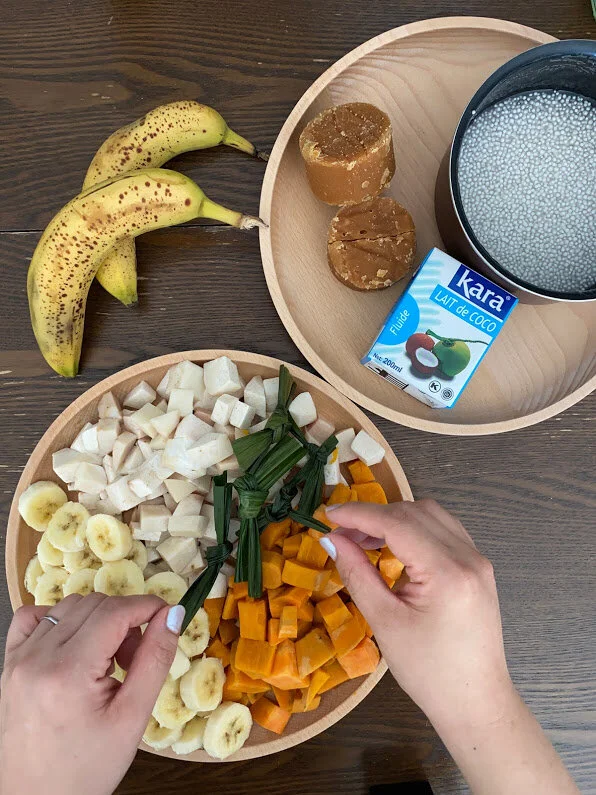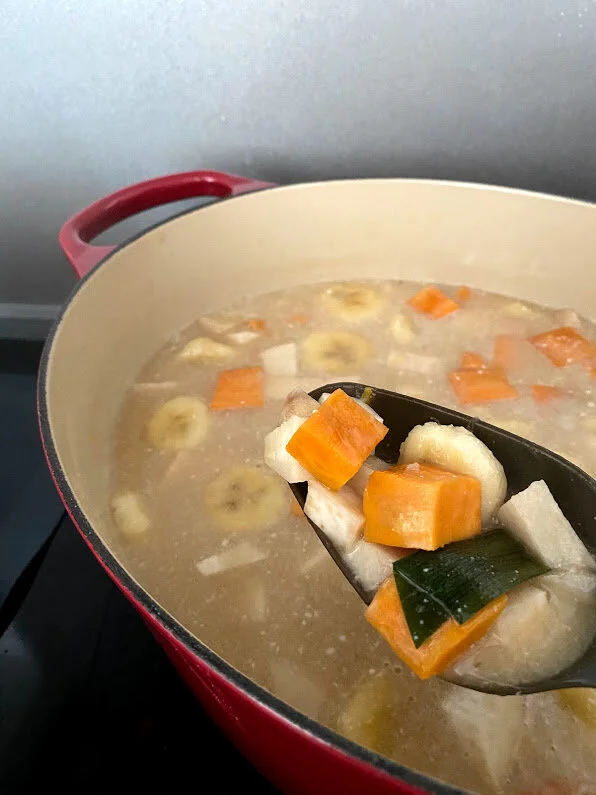Bubur Cha Cha
Bubur Cha Cha, what a catchy name! This is a malay dessert and breakfast dish in Indonesian cuisine, commonly eaten all through Malaysia and Singapore too. I’ve personally never had this for breakfast but I remember eating this sweet soup during tea breaks or as an after-meal dessert.
Prepared using pearled sago, yams, sweet potatoes, bananas, pandan leaves, palm sugar and coconut milk. It may be strange in some cultures to add root vegetables into dessert but yams and sweet potatoes in desserts are common in asian culture - like my Pumpkin Mochi with Lotus paste recipe or other asian desserts like yam paste with ginko, fried sweet potato balls etc…
This Bubur Cha Cha recipe is straight forward. Mise en place (French term for the preparation of dishes and ingredients), chop and dice all the fresh produce before cooking it into a sweet-coconut-ty soup. The aroma of melted gula melaka (palm sugar) together with pandan leaves and coconut milk is a wonderful medley, only you will get to smell and taste when making Bubur Cha Cha!
Ingredients:
200 grams Taro / Yam
200 grams Sweet Potato
3 Riped Bananas
1 cup Sago
2 discs of Gula Melaka (palm sugar) or Canne Sugar approximately 120 grams
200ml Coconut Milk
A pinch of salt
4 Pandan Leaves (Tied into a knot)
Instructions:
Fill a medium sized casserole / pot with water and bring it to a boil. Add in diced yams and sweet potatoes until they are soft. This should take about 15 minutes. Drain into a colander and set aside.
Using the same casserole, add in 3 cups of water and the palm sugar. Tie the pandan leaves into a knot and throw them into the pot. On medium heat, dissolve the palm sugar and stir. Once the sugar has been completely dissolved, turn down the heat to a simmer, stir in the coconut milk and a pinch of salt.
Gently add in sago, bananas, cooked yams and sweet potatoes and stir in low heat for another 3-5 minutes.
Warm the mixture is warmed through, turn off the heat and serve.
In Singapore food courts and hawker centres, you can often buy Bubur Cha Cha served warm or cold. My personal favourite is the warm version but eat it however you wish, this is a delicious sweet asian soup eaten warm or cold!


